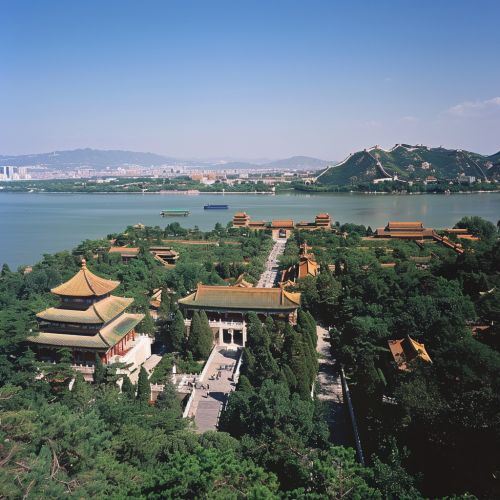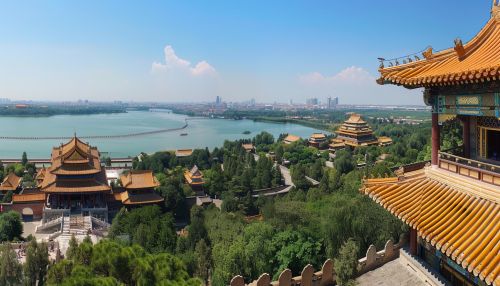Summer Palace
History
The Summer Palace, located in Beijing, China, is a vast ensemble of lakes, gardens, and palaces. It was initially constructed in 1750 by Emperor Qianlong as a gift for his mother's birthday, and was named 'Qingyi Garden' (Garden of Clear Ripples) Qianlong Emperor. It was later renamed to 'Summer Palace' and became the main residence of the royal family during the hot summer months.


The Summer Palace is a masterpiece of Chinese landscape garden design. The natural landscape of hills and open water combined with artificial features such as pavilions, halls, palaces, temples, and bridges forms a harmonious ensemble of outstanding aesthetic value.
Architecture
The Summer Palace is a showcase of ancient Chinese architecture, where the genius of the Chinese garden design and the richness of Chinese culture can be fully appreciated. The architectural structures in the Summer Palace can be divided into three groups: court area, lake area, and hill area.
The court area, located in the east of the Summer Palace, was where Empress Dowager Cixi and Emperor Guangxu lived and handled court affairs Empress Dowager Cixi. The lake area, located in the middle of the Summer Palace, includes Kunming Lake, which covers approximately three quarters of the whole Summer Palace. The hill area, located in the west of the Summer Palace, is a beautiful garden with a variety of buildings, such as the Tower of Buddhist Incense, the Hall of the Sea of Wisdom, and the Garden of Virtue and Harmony.
Cultural Significance
The Summer Palace is not only a classic example of Chinese garden design, but also a repository of Chinese traditional culture. The design of the Summer Palace was influenced by various philosophies and religions in China, including Confucianism, Taoism, and Buddhism Confucianism. The garden design, architecture, and the decorative arts all reflect the profound philosophies and religions of ancient China.
The Summer Palace is also a symbol of the Chinese nation's historical and cultural heritage. It has been a source of inspiration for Chinese artists and scholars for centuries and continues to be a significant cultural symbol in contemporary China.
Preservation and Tourism
The Summer Palace, as a UNESCO World Heritage Site, is under the protection of the Chinese government UNESCO World Heritage Site. The government has implemented strict measures to preserve the historical and cultural values of the Summer Palace, and to promote it as a tourist destination.
The Summer Palace attracts millions of tourists every year with its natural beauty and historical significance. It is not only a popular tourist destination, but also a place for people to learn about Chinese history, culture, and traditional garden design.
